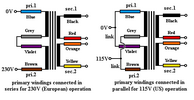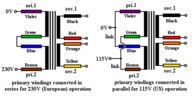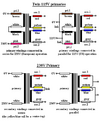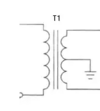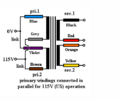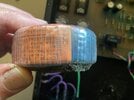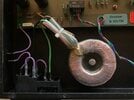I have a electronic sound processor that was built about 40 years ago in West Germany. Its power supply uses a toroidal transformer to produce 18 volts from a 220 vac mains. Reading the data on the coil it indicates 2 x 110 v primaries and 2 x 18 v secondaries. I want to rewire to use this here with a 110 vac mains. Am I correct: I need to wire the primaries in parallel and the secondaries in series to convert 110 vac to an 18 volt output? Thanks for any guidance you can give. Harold
-
Categories
-
Platforms
-
Content
